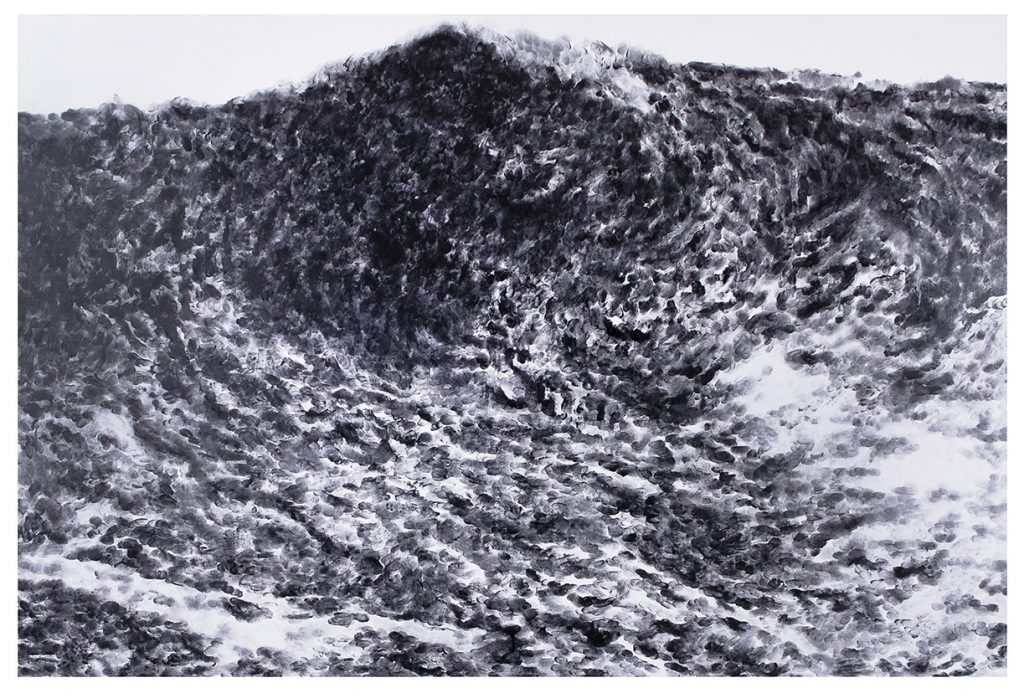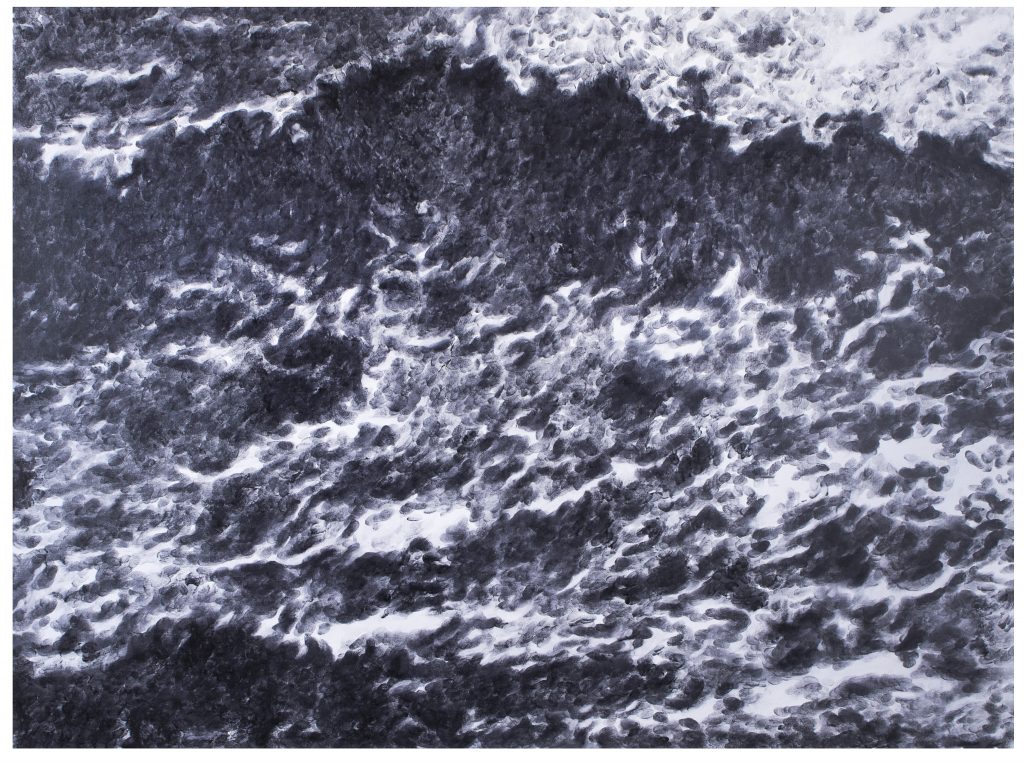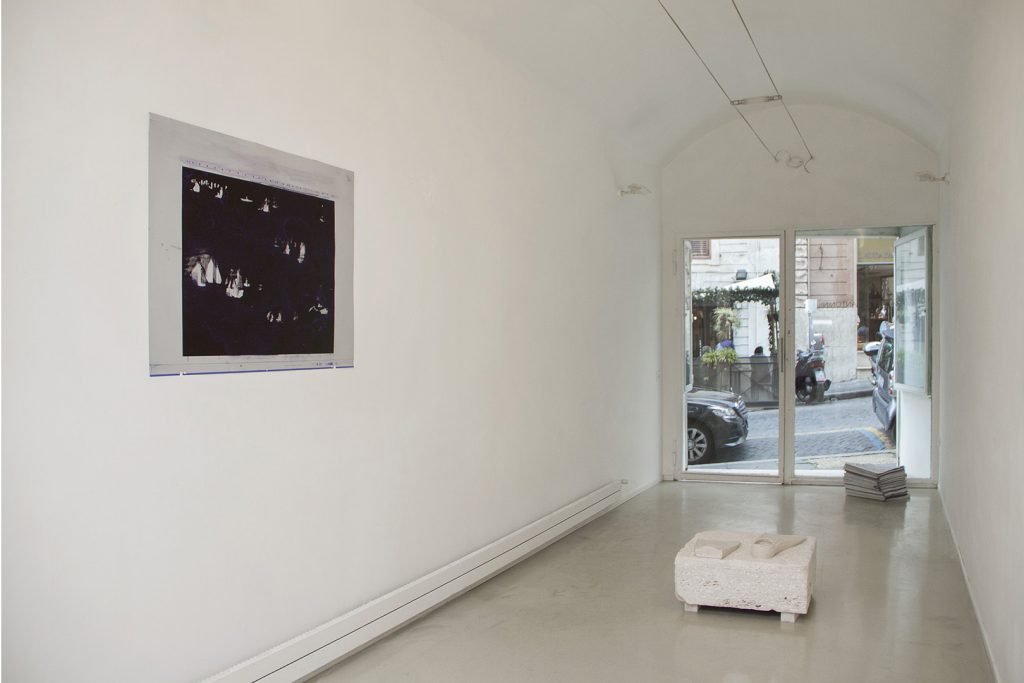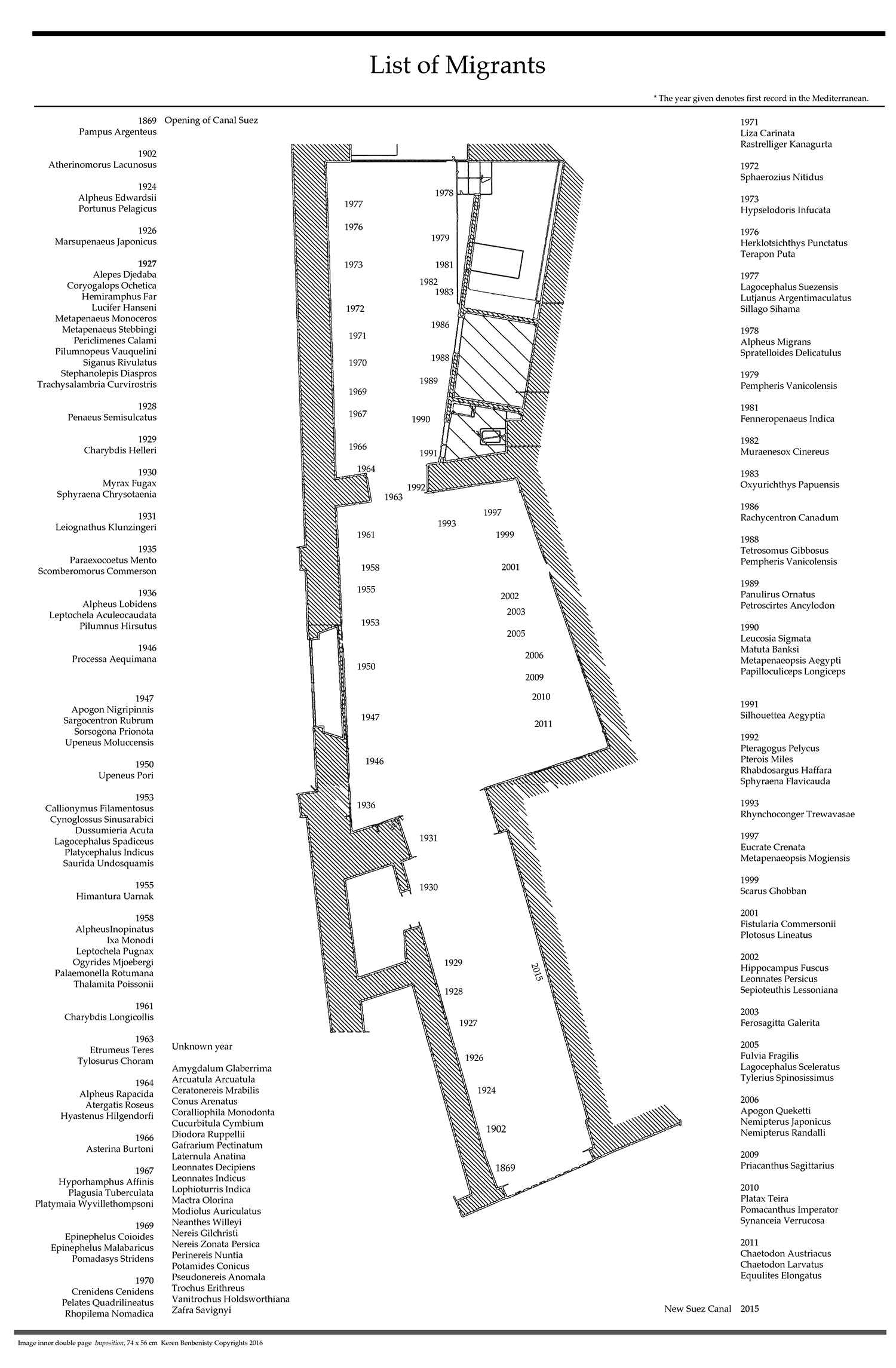
Mare Nostrum
Installation, artist fingerprints on wood panels, hand-carved Travertine stone, edition of newsprint, Offset metal sheet, video projection. 2016
Mare nostrum (Latin, Our Sea) was a Roman name for the Mediterranean Sea. In 2013 the term gained new meaning when the Italian government authorized “Operation Mare Nostrum,” a military and humanitarian operation aimed to rescue refugees and arrest traffickers. The project Mare nostrum developed from Keren Benbenisty desire to embody the contemporary notion of the sea whilst looking back at its status as metaphor and motif, in the work of Gustave Courbet.
“With its powerful associations with creation and destruction, with men`s destiny and voyage into the unknown, and unpredictable natural forces, the sea was taking on an increasingly important role in art and literature” in the 19th century. These artists portrayed the sea “alongside a political climate (colonization), technological advances (railways and steam-powered vessels) and social shifts…” This new body of work will investigate the ways in which these ideas have developed and shifted over the last decades.
The project is based on three occurrences from the late 19th century: the end of Romanticism and the advancement of realism with the introduction of photography; Offset printing techniques in which the inked image is transferred from a plate to a rubber blanket and then to the printing surface; the construction of Suez Canal in Egypt, which opened in 1869. It was also the origination of the phenomenon known as Lessepsian Migration: one-sided ongoing migration of marine species from the Red Sea to the Mediterranean Sea that has had a serious impact on the Mediterranean ecology, endangering many local and endemic Mediterranean species. Seemingly, these three occurrences have nothing in common. However, they are bound together with the industrialization and the emergence of modernism.









